A quick look at the Radio Museum pictures and descriptions makes it look like it ought to be fairly easy to hook up.
Here is the picture of the connections from the Radio Museum:

You provide it with 4V through the jacks on the left side.
You could use a battery pack with 3 normal AA or C cells in series. That's the easiest way, and will probably sound best.
A 5V powersupply like the one you charge your phone with would work as well, though it would be noisy (whines and squeals) since switching power supplies are that way.
It won't need much current - the old battery was small and supplied 4.5V, so it wouldn't be capable of supplying much current. Tens of milliamps, maybe a hundred or so.
[Edit] Just noticed the power on lamp. That'll probably consume more current than the microphone itself. It may also be in series with the microphone. If so, then it won't add to the current drawn from the battery. It would serve to limit the current through the microphone, in that case.
Carbon microphones are basically a squishy, noisy resistor.
Internally, the carbon button and the transformer primary are simply in series. Noise squishes the carbon button and varies the current through the primary of the transformer.
It is basically just a resistor connected across a battery. The current it draws will depend mostly on the resting resistance of the carbon button. Probably some tens to hundreds of ohms, so the current isn't very high.
The polarity of the power supply pretty much doesn't matter. There might be some slight advantage in reducing hum from power lines if you connect ground one way or another, but probably not much, and only if you are using a grounded powersupply.
On batteries, it won't matter at all. That side is very low impedance, so hum hasn't got much of a chance anyway.
Now the output.
The microphone uses a transformer to convert the low voltage and (relatively) high current from the button to a higher voltage, lower current signal.
Given that the output is high impedance (think of it as having a big resistor in series with it,) I don't think you can damage a normal amplifier or sound card with it.
The output might be too high, and cause clipping, but there shouldn't be any damage.
The output is symmetrical - it comes out of a transformer. It therefore doesn't really matter which you connect to the ground of your amplifier.
If you have an amplifier with a symmetric input (like most XLR inputs) then you've got it made. A symmetrical XLR cable with two banana plugs on the other end.
Same goes for most amplifiers with the 1/4 inch phono jacks (guitar amps.) Those are symmetric as well.
If you want to connect it to your PC, then you might have to do a little more work.
On a PC, you have two choices:
Line in and microphone in.
Line in would be my first bet.
The output level of the microphone will more likely match that than it will the microphone input level.
Connection is simple for line in. One of the V connections to ground on line in, the other to the left or right wire of the line in cable.
If that isn't loud enough, you might have to use the microphone input.
This is the one that's tricky.
Microphone inputs actually provide low current DC to the electret microphones you are expected to use.
Your transformer output microphone doesn't need that DC, and it could cause problems.
All you need is a capacitor between the microphone output and the microphone input on the PC. Something like 1 microfarad ought to do as a start.
Here's what it would look like:

Pretty simple. Note that line in uses a stereo plug while microphone in uses a mono plug.
Give it a try. You can't break anything, and it really ought to work. If it is too loud on line in, let me know. There's a way around that, too.
This of course assumes that the microphone isn't broken. As Tim Wescott says, the carbon button may have gone bad.

